Article written by Elisa - Travel Writer & Local in France
This article may contain compensated links. Please read disclaimer for more info.
Route des Grands Crus – The Ultimate Burgundy Road Trip
17/05/2023Best Burgundy Wine Route: Route des Grands Crus
The Burgundy Wine Region in Eastern France is a fascinating area to visit, especially if you like wine! The Burgundy Wine Region is divided into five wine regions: Yonne (Chablis and Auxerrois), Côte de Nuits, Côte de Beaune, Côte Chalonnaise, and Mâconnais.
The Burgundy wine country is best explored by following one of the Burgundy Wine Routes. This Burgundy itinerary by car will follow the Route des Grands Crus, combining culture, sightseeing, and wine.
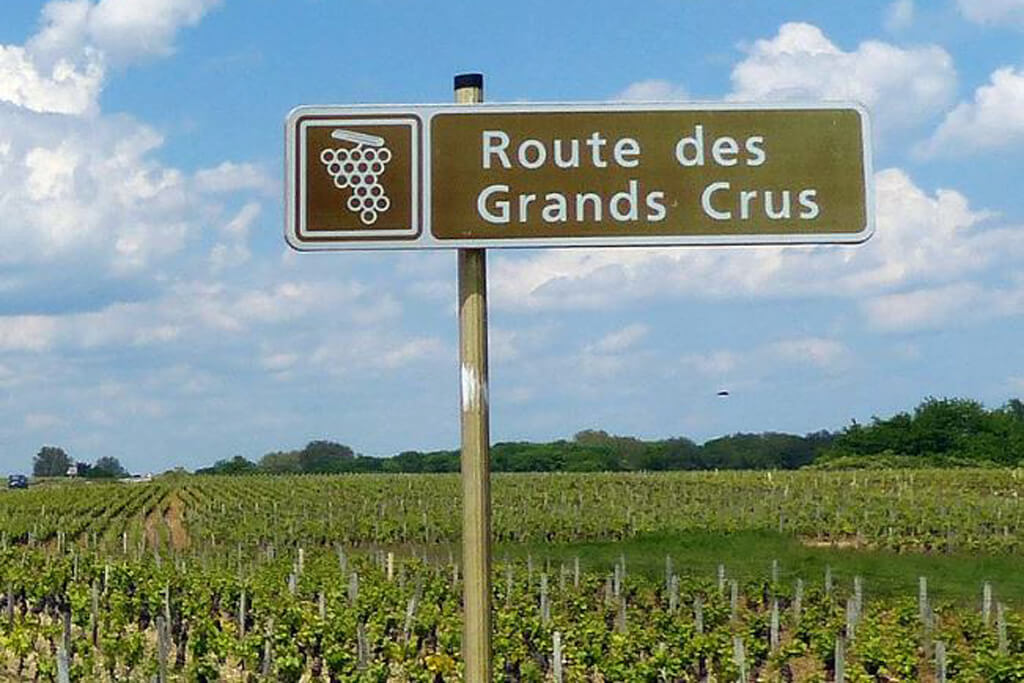
The Route des Grands Crus is a narrow strip of land, 60 km long and 2 km wide, that stretches out on a north-south axis from Dijon to Beaune in the department of Côte d’Or. This Burgundy wine route is well marked with brown background signs showing a white grape cluster. The trail crosses small wine-growing villages, visits two cities, and allows you to discover beautiful landmarks in France while tasting some of the best Burgundy wines.
With the Route des Grands Crus, Bourgogne invented wine tourism in France! This Burgundy wine trail was inaugurated in 1937, and it was the first wine route created in France.
The Route des Grands Crus, Burgundy, is divided into two parts. The first part, Côte de Nuits (from Dijon to Corgoloin), contains a string of the greatest red wines in the world, including 24 of Burgundy’s 33 Grands Crus such as Romanée-Conti, Clos de Vougeot, or Chambertin. The second part, Côte de Beaune (between Corgoloin and Beaune on to Santenay), produces some of the finest dry white wines in the world, with Corton Charlemagne, the wines of Meursault, or Montrachet.
From Beaune to Dijon, our proposed Burgundy road trip takes four days, and it covers some of the Route des Grands Crus’ main sights in Côte de Nuits, with several wine-tasting suggestions. The road distances are short, but there’s no rush: the Burgundy Wine Region is a beautiful and relaxing area to explore, and because wine tastings + driving are not easy to combine!
This 4-day Burgundy itinerary is one of the best road trips in France. Read more about road-tripping in France:
Route des Grands Crus Burgundy – Road Trip Overview
- Start: Beaune
- Finish: Dijon
- Duration: 4 days
- Suggested Route: Beaune – Vougeot – Dijon
- Total distance: 80 km, 2-3 hours drive in total
- Regions covered: Bourgogne-Franche-Comté
- Best for: sightseeing, landscapes, small towns, food, and wine.
Road Trip Route des Grands Crus Map
This self-guided road trip through the Route des Grands Crus covers the Côte de Nuits Wine Region, and it goes from Beaune to Dijon, but you can also drive it in the opposite direction.
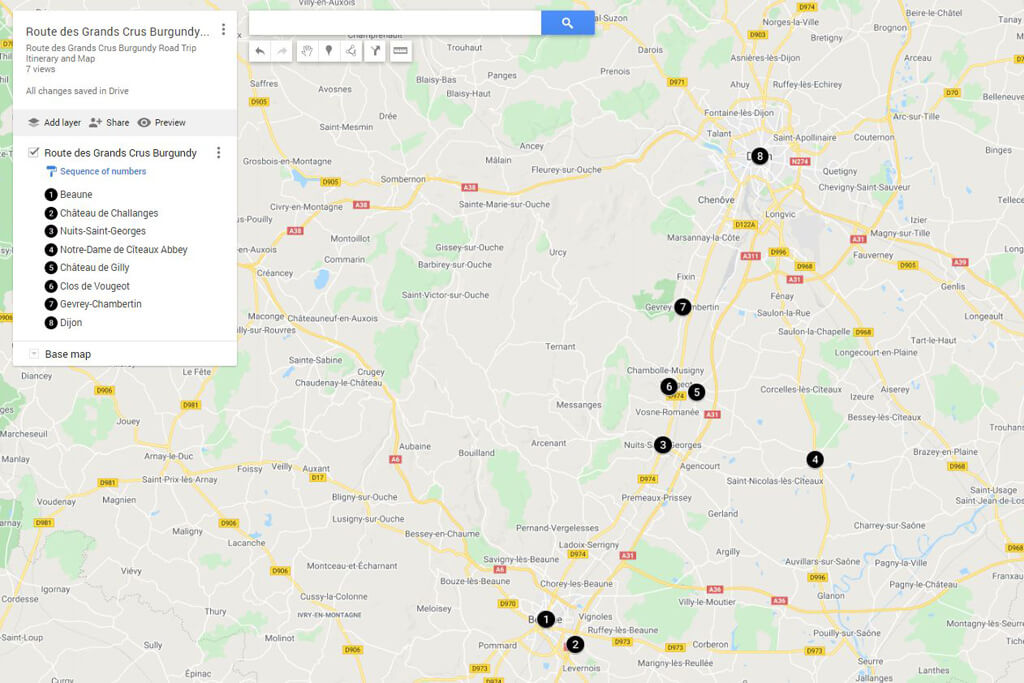
The Burgundy Wine Region
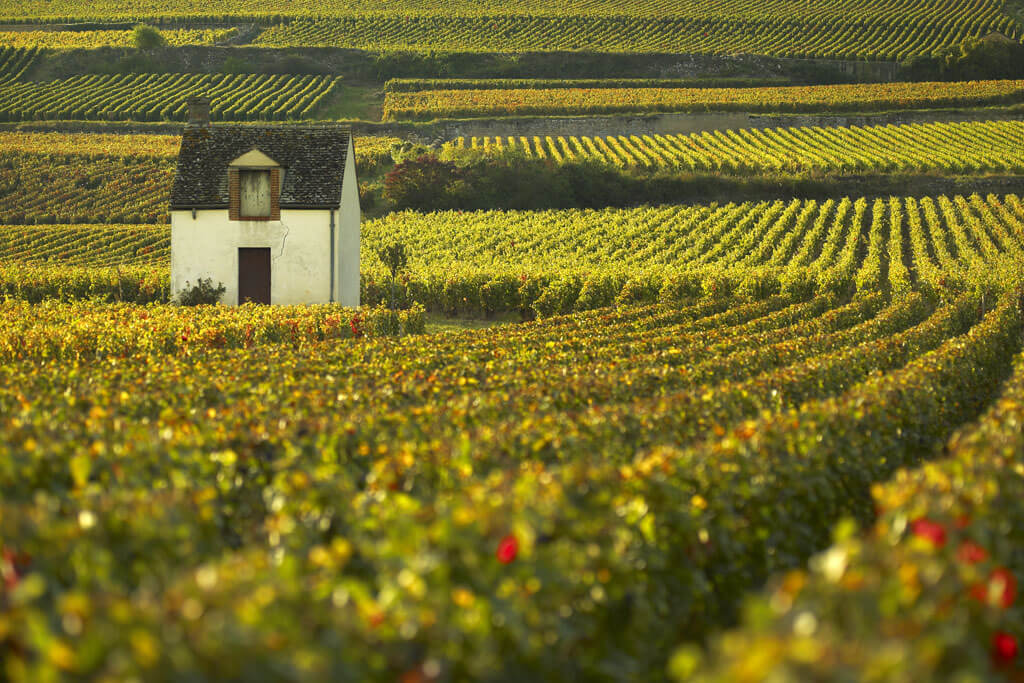
La Bourgogne, Burgundy in English, is a historical region that is today part of the French region Bourgogne-Franche-Comté. This region has soil and climatic conditions particularly favorable to viticulture, and it produces some of the best wines in the world.
The Burgundy Wine Region is spread over three French departments: Yonne, Côte d’Or, and Saône-et-Loire, with commonalities of limestone and clay soils and lots of sun. The climate is continental, oceanic, and Mediterranean.
The region that comprises the Burgundian vineyard cannot be extended, and it represents only 3% of the wine regions in France and a mere 0.3% of the world’s wine production. That’s one of the reasons why buying a bottle of Burgundy wine is a luxury!
The main Burgundy grape varieties are chardonnay for the whites and pinot-noir for the reds.
Traditionally, Burgundy winegrowers are known for their humble and traditional spirit. However, the rarity of certain exceptional cuvées arouses a real passion on the international scene.
Burgundy appellation wines are classified into three levels. At each level, the appellations must follow specific production specifications.
- AOC* Grands Crus: 33 AOC, 1% of the volume of Burgundy wine produced;
- AOC Villages (Villages Premiers Crus, and Villages): 44 AOC, 46% of the volume of Burgundy wine produced;
- AOC Régionales (different sub-classes): 7 AOC, 53% of the volume of Burgundy wine produced
*AOC: Appellation d’Origine Contrôlée (controlled designation of origin in English).
TIP: If you are planning to bring a few bottles home (who could resist?!), make sure you pack your wine properly so it arrives safely home!
Route des Grands Crus Burgundy – Itinerary 4 Days
Day 0 | Arrival in Beaune
The first stop of this Burgundy road trip is Beaune, Burgundy’s wine capital. We recommend arriving in Beaune the day before and booking accommodation for two nights, so you can spend a full day in Beaune.
If you don’t have a car, you can get to Beaune by train and then rent a car in Beaune. Click here for our best tips for renting a car in France.
Click here to rent a car in Beaune

For your stay in Beaune, book accommodation at Château de Challanges, a gorgeous 19th-century country house set in 7 hectares of forest. The château is located only 2.7 km from Beaune’s center and has all the amenities for the modern guest, with a swimming pool and free private parking inside.
If you prefer to be more central, then the Hostellerie Cèdre & Spa Beaune is a fantastic property with a beautiful terrace garden.
Click here to book your stay at Hostellerie Cèdre & Spa Beaune
Day 1 | Beaune
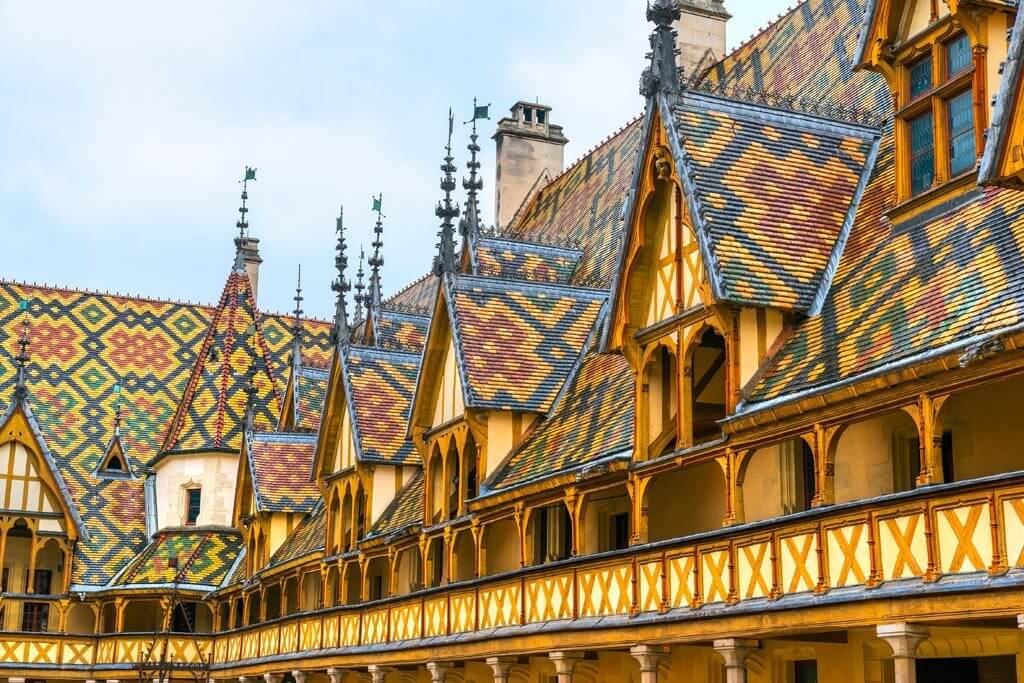
Beaune is a pretty medieval town, compact and very easy to explore on foot. Be sure to visit Les Hospices de Beaune for your day in Beaune; it is one of the most famous landmarks in France and a jewel of Burgundian architecture. Funded by their renowned wine estate, the Hospices have provided treatment and support for the elderly, sick, and destitute since the Middle Ages.
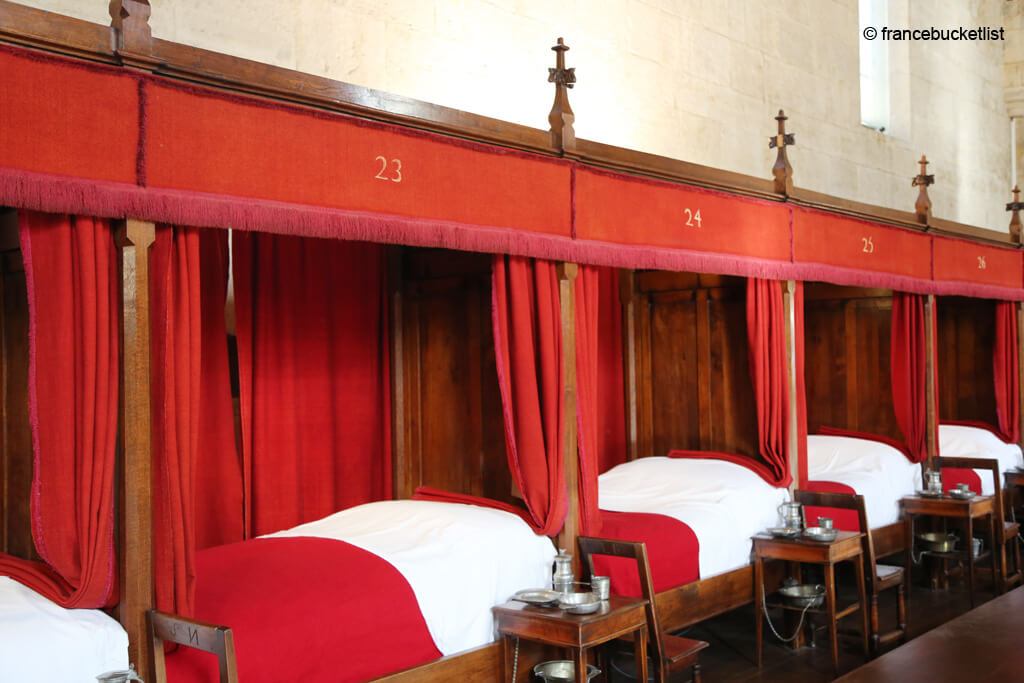
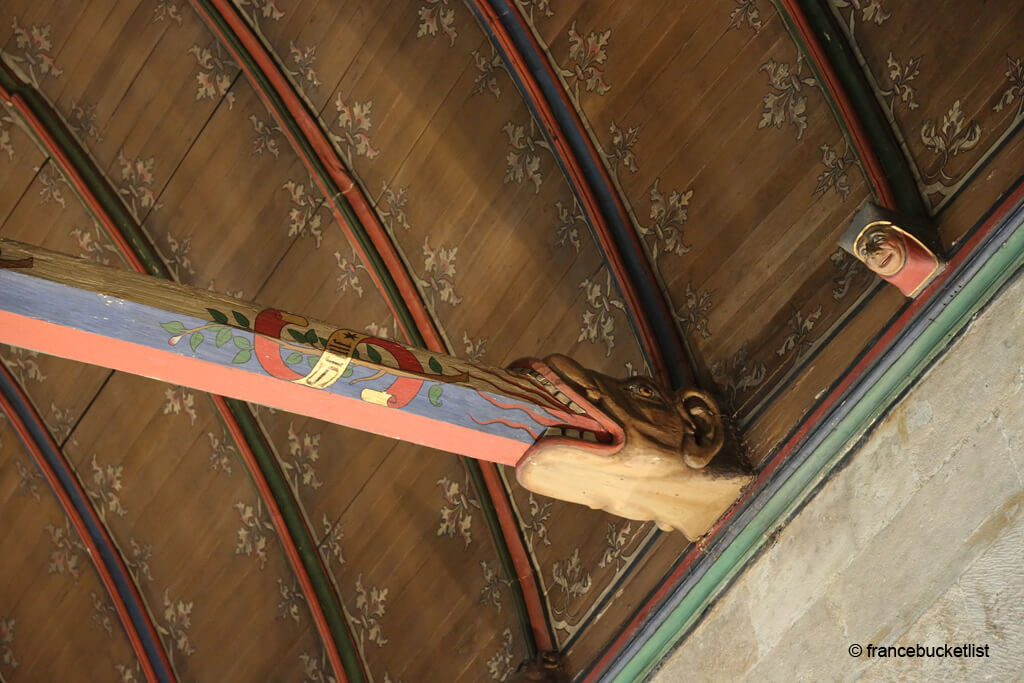
DID YOU KNOW? Below the streets of Beaune, a vast network of cellars sheltered the Christian world’s best wines for many centuries!
Then, head to La Maison des Climats (Porte Marie de Bourgogne, access is available through the Tourism Office), the must-place for anyone wanting to understand the climats vine-growing lands of Burgundy, which have been on the UNESCO World Heritage List since 2015.
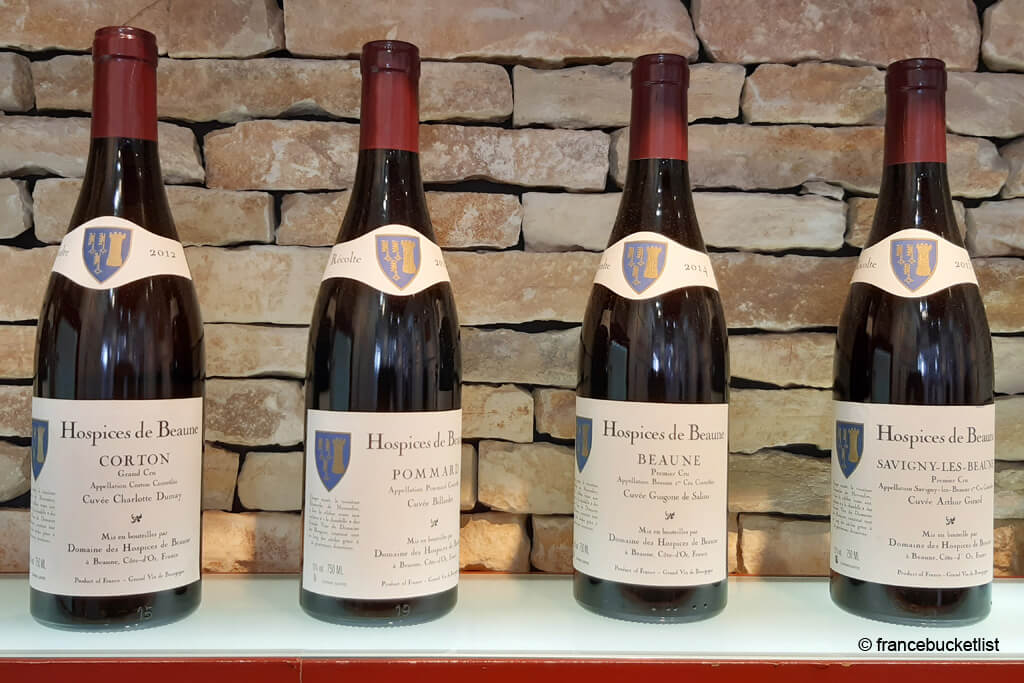
THE CLIMATS OF BURGUNDY: Climat is the specific term used in Burgundy for a wine-growing plot. Climats are the worldwide birthplace of terroir-based viticulture. Over the centuries, local winegrowers have patiently identified each terroir and revealed them through the wine they produced. They collected and used the many rocks and stones present in the vineyard to build huts (known as cabottes) and walls to separate the vineyards into more than 1,000 climats. Nowhere else in the world has man shown such determination to precisely link a wine to its place of origin and production in Burgundy. Each climat was given a name, which is now cast in stone in the Appellation d’Origine Contrôlée (AOC) system, and they reflect both its place of origin, the winemaker’s skills and expertise (or ‘savoir-faire’ as we say in France). The climats of Burgundy were recognized as a treasure for Humanity and listed as a UNESCO World Heritage Site in 2015.
By now, it’s wine time, and luckily Maison Champy (5 Rue du Grenier de Sel, Beaune) is not far away. Maison Champy (est. 1720) was the first winery to have been established in Burgundy. Today, it is internationally recognized for the quality of its Grands Crus from the Côte de Nuits and the Côte de Beaune vineyards, and in particular for its Corton Charlemagne wine. The Maison organizes tours and tastings with the opportunity to buy your favorite wines on-site.
If you are in the mood to explore other wines, here’s the list of some great wine houses worth exploring during your car-free day in Beaune:
- Domaine Chanson (10 Rue Paul Chanson /Rue du Collège, Beaune; Beaune wine region)
- Bouchard-Ainé & Fils (4 Boulevard du Maréchal Foch, Beaune; Beaune wine region)
- Domaine Loubet-Dewailly (11 Impasse Notre Dame, Beaune; Pommard wine region)
Day 2 | Beaune to Vougeot (Côte de Nuits)
After a good breakfast in the château’s garden, this Burgundy wine route leaves Beaune in the direction of Vougeot, where you will spend one night. For a gloriously unique stay, book a room at Le Clos de la Vouge, a superb hotel that occupies an ancient mill by the river in the heart of a Burgundy vineyard. The hotel features individually-decorated rooms and an outdoor swimming pool with a terrace.
Click here to book your stay at Le Clos de la Vouge
Château de Gilly is a good, less central, alternative. This 14th-16th century château is one of the best château-hotels in Burgundy, with moats, French-style gardens, and a dining room with a magnificent vaulted ceiling.
THE CÔTE DE NUITS is a hillside vineyard in the Burgundy Wine Region where almost all of the vines are exposed to the southeast, which allows the perfect maturity of its most important grape, pinot noir. With more than 90% of red wine production, this part of Burgundy is particularly well known for its 24 appellations Grands Crus. The Grands Crus are the highest vineyards, so they are more exposed to the sun. They are also the oldest vineyards in the Côte de Nuits, with the best soils. No wonder then that the most expensive wine in the world is a Burgundy wine, particularly a Côte de Nuits!
Morning at Nuits-Saint-Georges
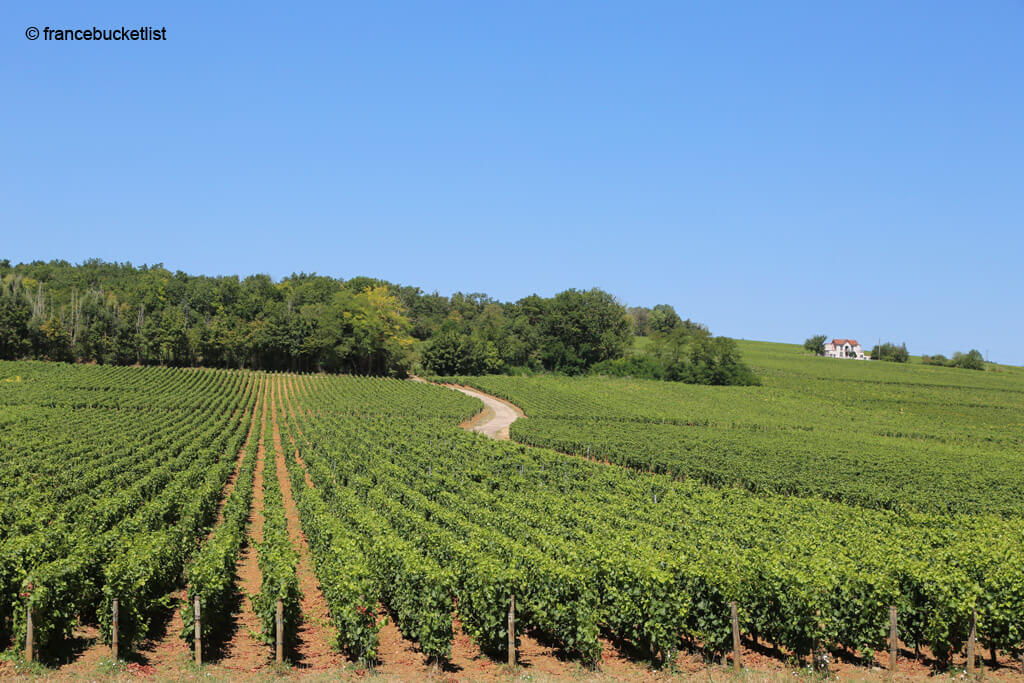
On the way to Vougeot, the landscapes of this wine route Burgundy are beautiful, with plenty of photo opportunities, and nobody will blame you if you decide to stop a couple of times to get a closer look at the vines. Then, drive to Nuits-Saint-Georges, a small town with a long history of winemaking.
Nuits-Saint-Georges gives its name to the Côte de Nuits vineyard, and its patron Saint Georges gives his name to its most famous wine. Most of the vines grown around this village are pinot noir, but some plots are planted with chardonnay. The Confrérie des Chevaliers du Tastevin, Bourgogne’s most famous wine fraternity, was founded in Nuits-Saint-Georges in 1934.
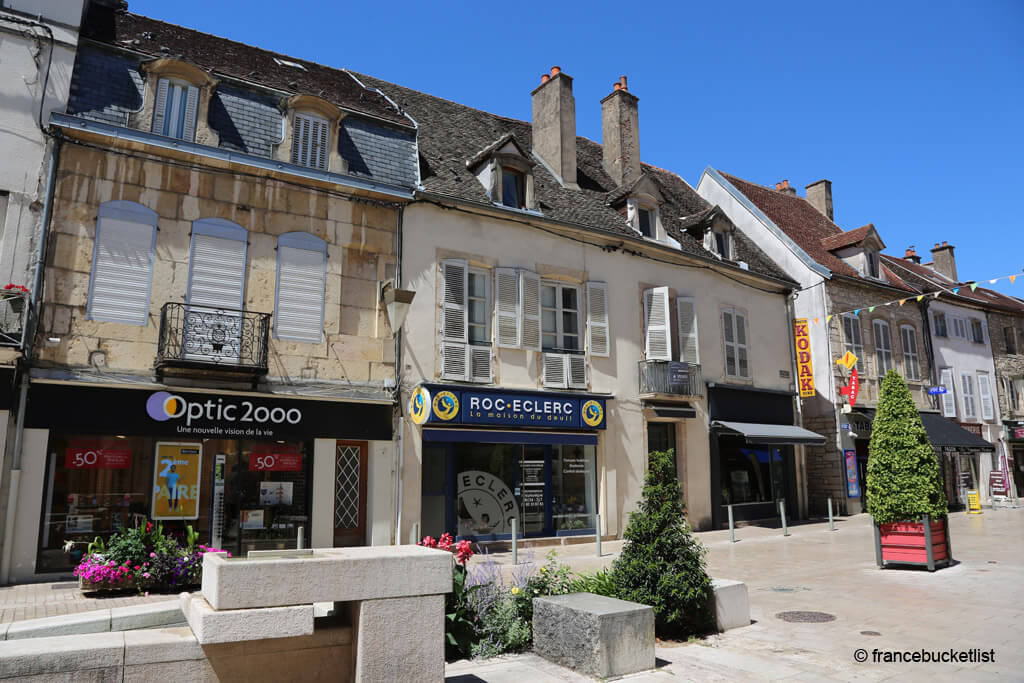
This small but lively town is good for a short visit and perhaps more wine tastings. Maison Moillard (2 Route de Dijon, Nuits-Saint-Georges) is an excellent place to go, with commented tastings in French and English, detailed explanations, and a good wine quality /price ratio.
Take an early lunch at the town’s main square, under the shadow of its intriguing belfry, before heading to Cîteaux.
Afternoon at the Abbey of Cîteaux
The next stop of this Route des Grands Crus road trip is Cîteaux. Visit the Abbey of Cîteaux and learn the history of this fascinating and important place for Burgundy’s wines. Founded in 1098, the Abbey of Notre Dame de Cîteaux was the cradle of the Cistercian order in France and a model for numerous monasteries that were placed under its control.
The first vineyards in Burgundy date back to the Celts and later the Romans. However, it was the Abbot of Molesmes, founder of Cîteaux, who identified the best kind of soils and selected certain grape varieties, improving with it the quality of the Burgundy wines. Cîteaux’s wine estate was huge until the French Revolution and the nationalization of ecclesiastical property.
Day 3 | Vougeot to Dijon
Morning at Château Clos de Vougeot
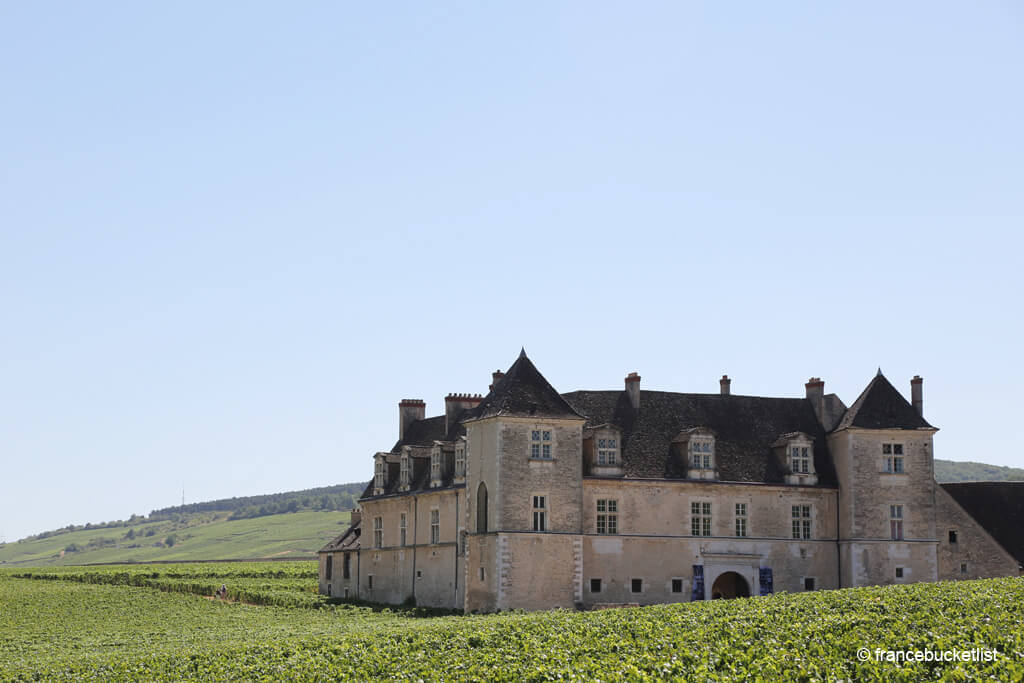
After a good breakfast, drive to the Château Clos de Vougeot, one of the musts of the Burgundy Wine Region.
In the Middle Ages, wine-growing developed under the impetus of the Benedictine and Cistercian abbeys. In 1336, the monks of the Abbey of Cîteaux established the principles of winemaking. They built the first walls separating vineyards, known as clos, contributing like this to the promotion of the region’s wines. The first of those clos, Clos de Vougeot, is today the most iconic château of the Burgundy Wine Region.
Wander around the château’s different rooms and halls; the visit reveals the monks’ winemaking genius in the Middle Ages. It was the monks of Cîteaux who, in the 12th century, built the magnificent cellar and winery in the clos. Today the cellar houses two monumental wine presses.
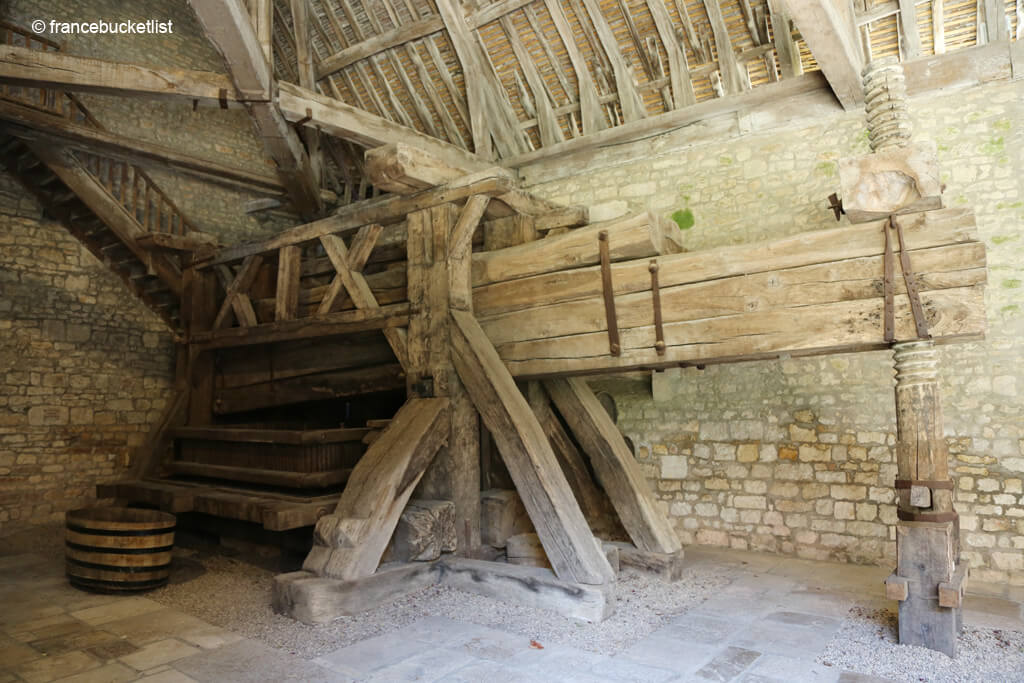
In Clos de Vougeot, the Confrérie des Chevaliers du Tastevin meets 16 times a year to celebrate the Burgundy wine (and good food!). During these spectacular dinners, the Confrérie also knights new Chevaliers du Tastevin.
For lunch, head to Gevrey-Chambertin for more good food and wine. On the way, you can stop at the unique Maison Vougeot, a building signed by Jacques Garcia dedicated to the house’s wines. A hidden gem in this Burgundy itinerary, Maison Vougeot offers tours in French and English and wine tastings à la carte.
Afternoon at Gevrey-Chambertin
Gevrey-Chambertin is another small wine-growing village on this Burgundy wine trail that enjoys a worldwide reputation: Gevrey-Chambertin is home to 9 Grands Crus, the most famous of which is Chambertin.
Wine beginners may be interested in visiting La Halle Chambertin (1 Rue Gaston Roupnel, Gevrey-Chambertin) in the heart of the village. In May 2020, the former covered market opened a new space for tasting some of the Grands Crus, Villages, and Régionales wines of Gevrey-Chambertin. For 20 euros, take a wine-tasting session of 4 Gevrey wines (Régionales and Côtes-de-Nuits), where you’ll also learn the basics of wine tasting.
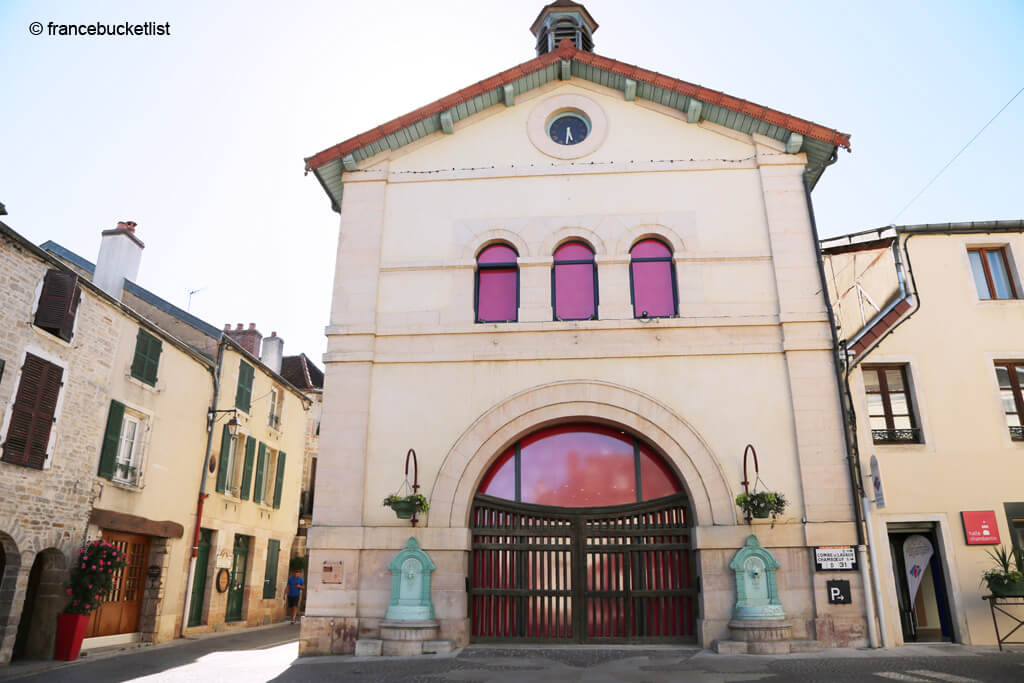
More experienced wine lovers can go to Domaine Quivy (7 Rue Gaston Roupnel, Gevery-Chambertin) for wine tasting and good shopping. This charming 18th-century private townhouse is listed as a Historical Monument and has its own cellars, vat house, and testing cellar.
After the visit, it’s time to head to Dijon, the last stop on this Burgundy road trip. In Dijon, the Grand Hotel La Cloche Dijon is a good option, conveniently located close to all the main attractions. Book for one night.
Day 4 | Dijon
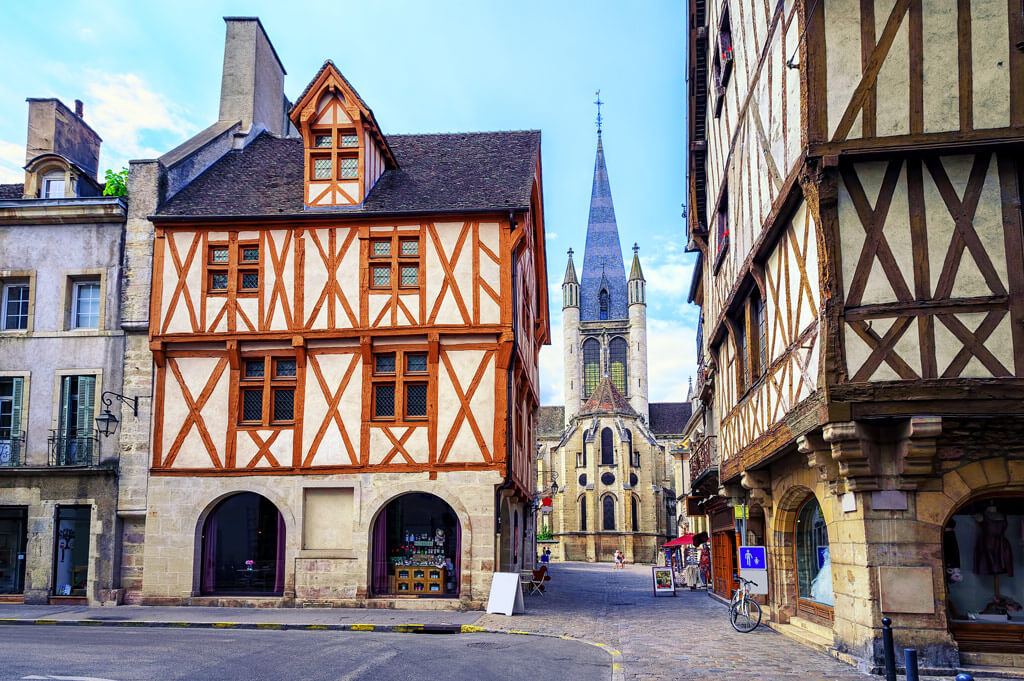
Dijon is one of the most beautiful cities in France and the capital of the historical region of Burgundy. It was home to the Dukes of Burgundy, and as such, it has a fascinating cultural and architectural heritage.
After the monks, the powerful Dukes of Burgundy dominated art and culture across Europe. With their help, the Burgundy region and its wines gained considerable economic and cultural standing. Burgundy wines were shipped all over Europe, and winegrowers began ranking their wines according to their provenance and quality in a precise hierarchy.
DID YOU KNOW? In 1935, Duke Philippe le Hardi uprooted all the garnay grapevines, which he described as ‘very harmful to human beings.’ He ordered pinot noir to be the only authorized grape for producing Burgundy wine.
The list of fun things to see and do in Dijon includes:
- The Hotel de Ville
- Jardin des Ducs
- Musée des Beaux-Arts, in the Palace of the Dukes
- The Old Town
- Notre Dame Church
- Central Market
Follow the owl! In Dijon, brass plaques engraved with owls (the city’s symbol and unofficial talisman) lead visitors to the main sights of Dijon. Don’t miss the Hôtel des Ducs de Bourgogne, an elegant palace built in the 14th-15h century with a beautiful art collection about the history and expertise of the vine and wine, from Antiquity to the present day.
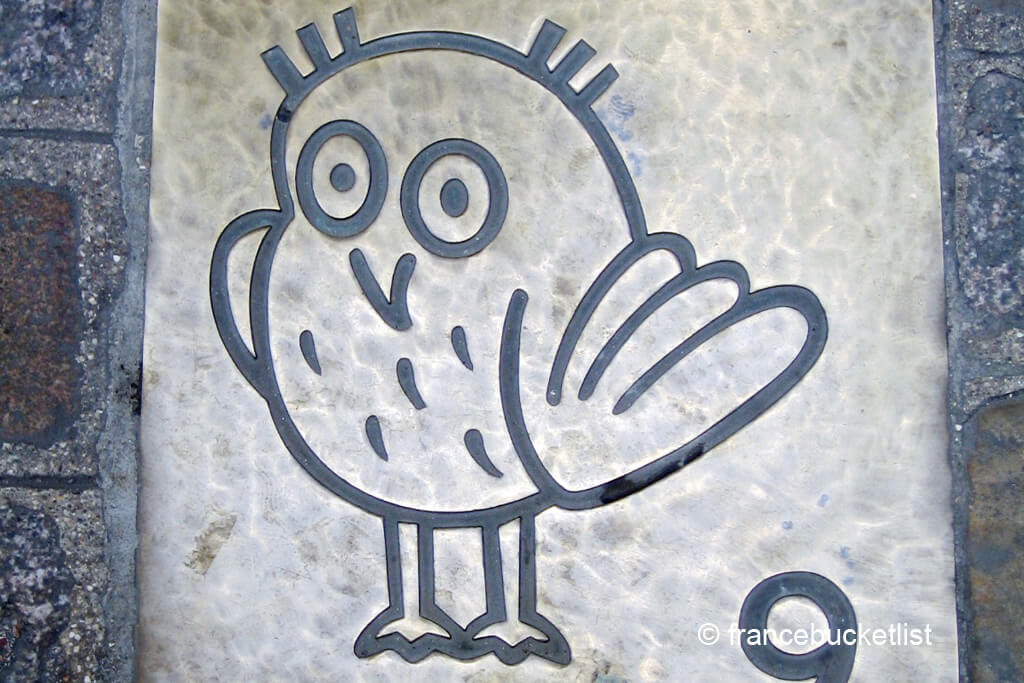
So, what are you waiting for exploring the Burgundy wine region? Book this road trip, Route des Grands Crus Bourgogne, today!


